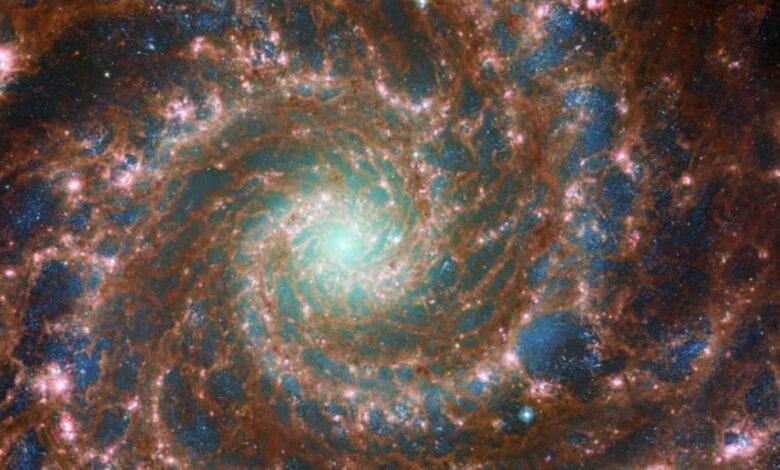Here’s how the James Webb Space Telescope helps us look back in time

By observing space, scientists can see into the universe’s past. This is possible because light takes time to travel great cosmic distances. By capturing light from celestial bodies, telescopes act as windows into earlier periods of the universe’s history.
Light travels at a speed of about 300,000 kilometers per second. Despite this incredible speed, the enormous distances in space mean that light takes a noticeably long time to reach Earth. For example, the moon is about 250,000 miles from Earth, and it takes 1.3 seconds for the light to arrive. Likewise, the light from Neptune, the farthest planet in our solar system, takes about four hours to reach us.
Measuring galactic distances using light
Within the Milky Way Galaxy, distances are expressed in light years, referring to the distance light travels in one year. Proxima Centauri, the closest star to our solar system, is more than four light years away. Observing it reveals what it looked like over four years ago, when the light we see today began its journey.
Galaxies outside the Milky Way are even further away. The Andromeda Galaxy, the Milky Way’s closest major neighbor, is about 2.5 million light years away. When scientists study Andromeda, they observe light that began its journey before early humans roamed the Earth.
The oldest light in the universe
The James Webb Space Telescope has the ability to detect light from galaxies billions of light years away. This light emerged when the universe was in its infancy, allowing astronomers to study its early stages. Observations of such distant galaxies provide valuable insights into the evolution of the universe throughout its 13.8 billion year history.
Astronomical research with telescopes like Webb has transformed our understanding of time and space, allowing deeper investigation into the origins of the universe and its ongoing transformation.




